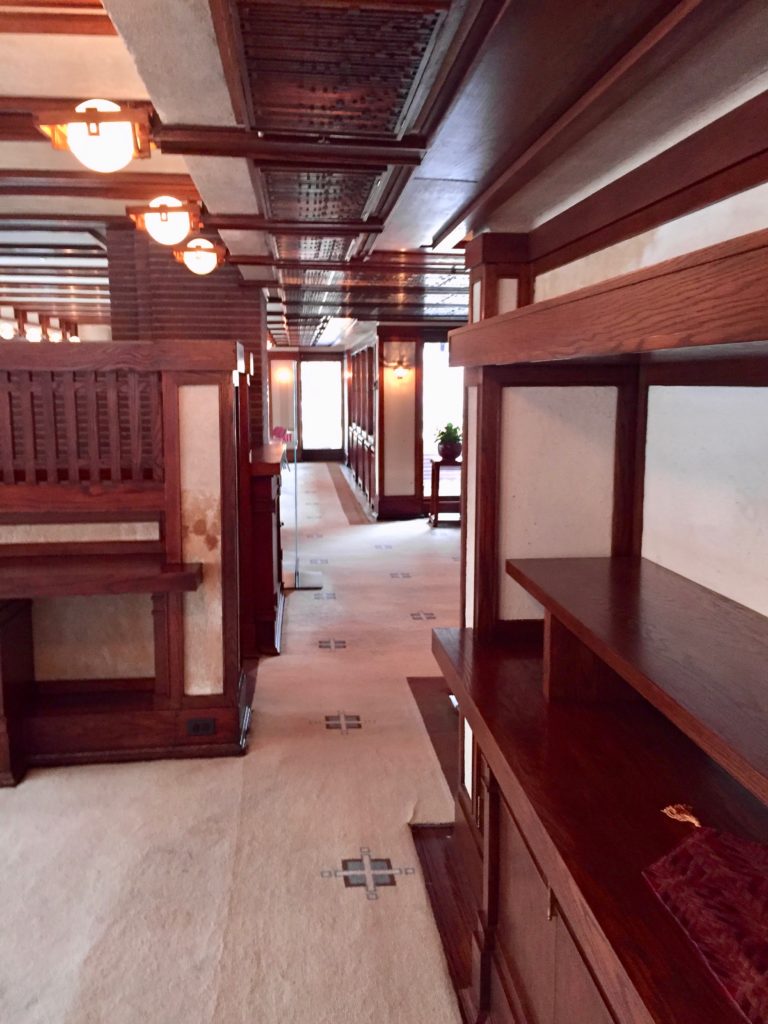The best way to experience the Frederick C. Robie House — Frank Lloyd Wright’s masterwork near the campus of the University of Chicago in Hyde Park, Ill. — may be to go back in time. Imagine yourself in evening attire standing outside an ornately detailed Victorian home at the turn of the 20th century. You are greeted in a formal entry then taken to a front parlor. You later dine in a large formal dining room. You never set foot in the regions of the house where the family spends most of its day.

That was the cultural and architectural straitjacket that Wright chucked when he designed the brazen Frederick C. Robie house. The Robies, with two young children and plenty of money, asked Wright for contemporary family house, open and light-filled, yet private, with rooms where family members could spend quality time together, and alone. They wanted to welcome visitors into the spaces where they lived. And they wanted to take advantage of great views of a park to the south.
Built between 1909 and 1910, the Robie house is a early precedent of today’s family-friendly floor plans. Touring the home brings to mind many important concerns for anyone thinking of building a new home, questions like, Where do you plan to spend quality time together as a family? Where do you expect to eat your meals? How do you prefer to relax and work at home? And where do you prefer to entertain guests? Wright’s masterpiece answers these questions, for the Robie’s at least.

As with all of Wright’s work, the Robie house also offers solutions to important trade-offs that bedevil homeowners even today — openness versus privacy, daylight versus energy efficiency, closed versus open spaces. Instead of creating a maze of rooms with special purposes, Wright drew a flexible great room with zones for conversations, viewing, relaxation, reading, dining, and any nearly any other family pursuit. The huge multi-purpose family room must have been a real eye-opener for visitors accustomed to Victorian hierarchy.
The family room, anchored by a fireplace, is a wonderful place to hang out, even during a tour. Operable decorative windows on three sides promote cross breezes and bathe the room with light. The docent on a recent tour points out that Wright drew window patterns – colored and clear glass combined at 30- and 60-degree angles — that make it difficult for neighbors to see who is in the room or what they are doing. At night, passersby would see electric lights, unusual for the time, shining from the ceilings inside rooms.
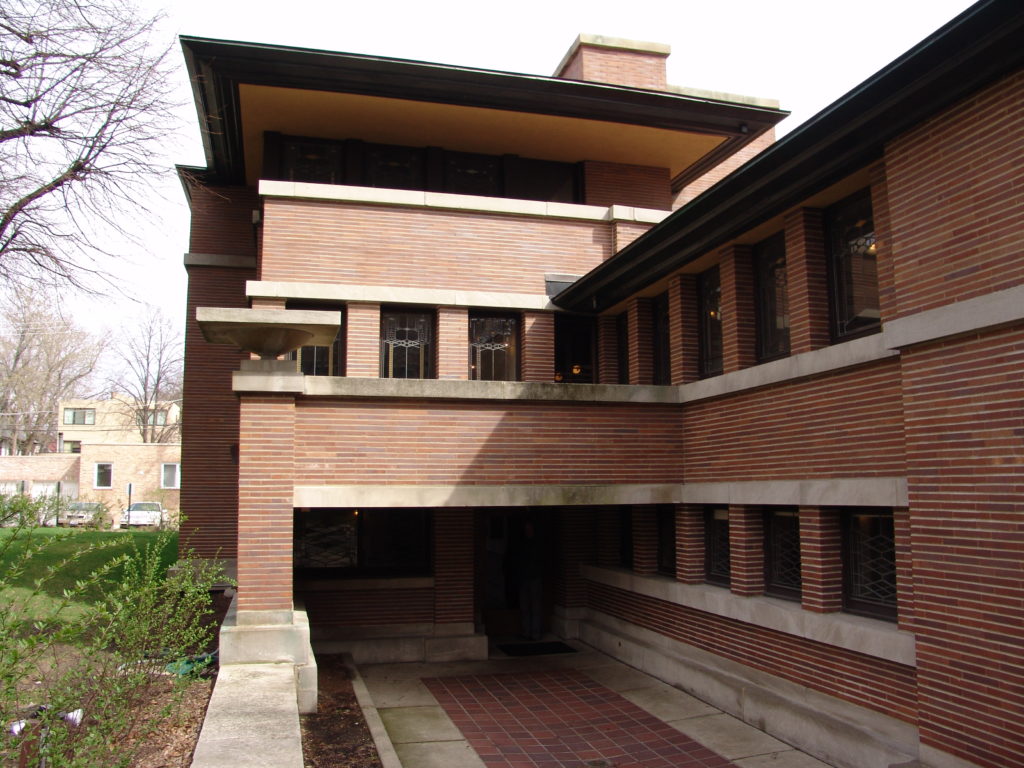
First-time visitors to this house might have trouble finding the entrance — it’s hidden around the side, under a balcony. The path to the door purposely provides an up-close look at the home’s exquisite Italian brick details and limestone trim. The docent points out that all the home’s major exterior features – the projecting porch, the sheltering eaves, the limestone planters, the art glass windows – are summarized at the front stoop. He notes that the home’s major details are embedded in the structure itself rather than appended as decoration, an important tenant of the master’s architecture.
The tight roof over front door speaks to another of Wright’s famous brush strokes — compressing people in tight spaces so that they move toward open spaces that provide release. In the case of the Robie house, release is delayed. Low ceilings greet visitors in the entry foyer, where red oak furniture, molding, and cabinetry hint at an interior scheme that becomes more obvious later on. Leaving nothing to chance, the ground floor provides play space for children of all ages. To one side, a billiard room to one side, with a built-in safe and storage, serves the adults. The children’s playroom on the opposite side is ergonomically designed with a low fireplace and play area. The rooms share access to a walled outdoor garden, where children could play safely from the street.
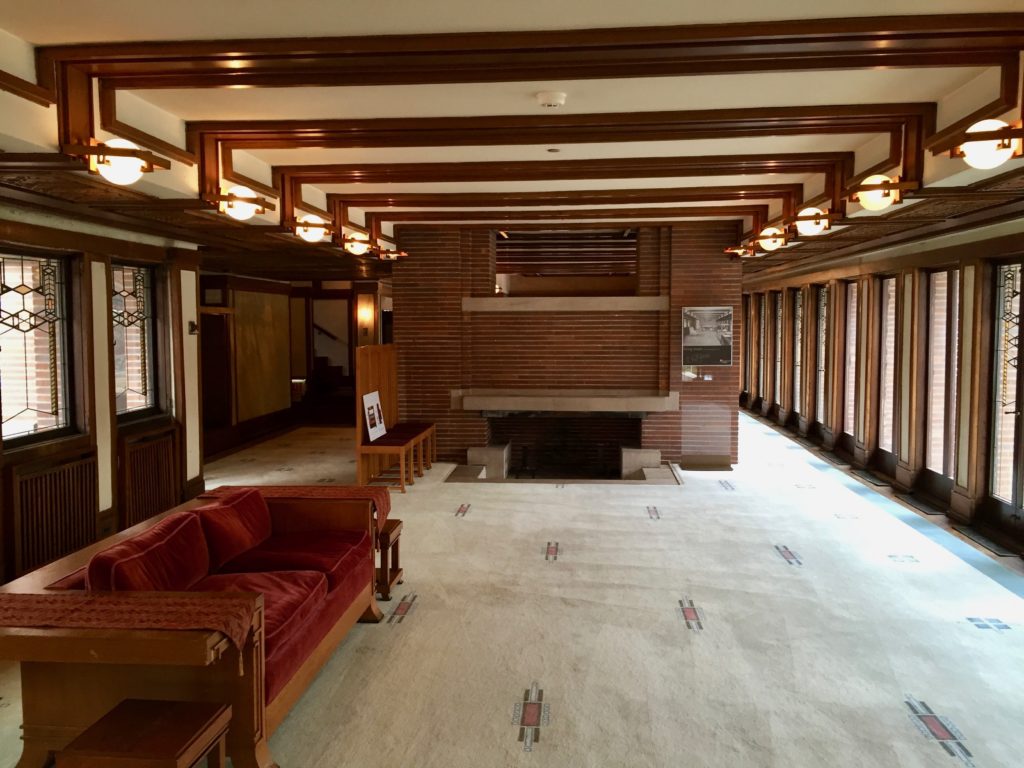
Wright put the main public rooms on the second floor, where they would have a better view of the park (unfortunately the neighborhood has been filled in and the park views are no more). To get there, you move from the dark entry hall, up a dimly lit, half-turn staircase with oak-lattice screens that provide glimpses of the main floor. You are finally rewarded at the stair landing with long, light-filled views of the family room to one side and the dining room to the other. The home is magnificent.
It’s interesting to think how Wright’s compression and release technique could work in your new home. I’ve seen it done in many ways. One simple method is to use landscape architecture – a tree-lined front walk that gives way to a glass front door. Tight interior hallways could lead to great rooms with soaring ceilings. Something else to consider — Wright often lowered the ceilings in bedrooms (where people were supposed to lay down) and libraries (where they were supposed to sit) so that public spaces with higher ceilings seemed more special.
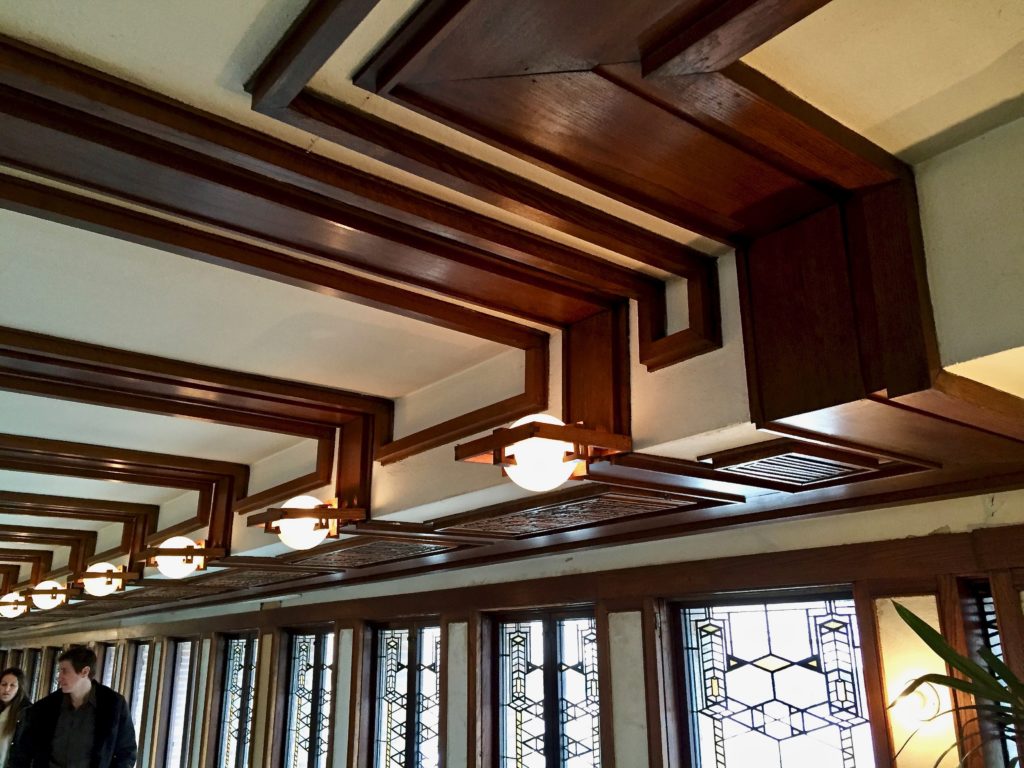
The 9,000-square-foot Robie House was one of the last Wright designed in the Prairie Style. Everywhere you see the emphasis on long horizontal and short vertical lines, rather than big vertical elements like the towers or two-story entry halls. The pattern is even evident in the brick work; he specified a vertical course of red mortar between the Italian bricks to create long horizontal bands. Masons, who must have been cursing as they worked, laid tan mortar on the top and bottom of the bricks to reinforce the long, horizontal pattern.
In contrast to a Victorian home with many small rooms, the Robie house is wide open. This was accomplished through the use of steel beams carry most of the home’s weight to piers on the west and east sides. That allowed Wright to design large living areas, with decorative, non-structural doors and windows along the sides. A sunken masonry fireplace physically separates the living and dining room. But an opening above the fireplace retains the visual connection between the rooms, a look that’s achieved today with a see-through fireplace.

The most impressive exterior feature – a long cantilevered roof on the west side – resulted from a creative approach to setback requirements. Wright discovered that a local requirement that homes be set back 35 feet from the street didn’t apply to porches. So he designed a large one with a massive cantilevered roof that juts out nearly to the street, extending 20 feet beyond the last masonry support. The irony is that even though the porch, accessed through art-glass doors in the living room, is close to the street it would be very hard to see anyone sitting on it. One of Wright’s goals, unusual for the time but almost a given today, was that the Robies be able to move freely from interior to exterior spaces.
The master also considered the impact of the sun on key interior spaces, a move that seemed especially important on the chilly winter day that I toured the house. Overhangs on the south side welcome winter sunlight – the sun is low in the sky in the winter – to penetrate the family room. But the eaves are long enough to prevent the room from over-heating in the summer. The garden purposely faces the south side to receive the most sunshine. On the west side, where summer sun can be harshest, the cantilevered roof shields the house. Everyone building a new home today needs to consider the impact of sunlight. Daylight can turn rooms into very special places. It can also make them virtually uninhabitable.
Wright often designed furniture, fixtures, and interior details for his Prairie style houses, partly to prevent Victorian styling from creeping into the mix. He only designed furniture for the public rooms of the Robie house – they couple may have run out of money – but little of it is on display for the tour. Only two of Wright’s original square bronze light fixtures, hanging above hemispherical wall sconces, remain. The pattern – spherical globes and wooden squares – is repeated in the ceiling trim. Intricate soffit lighting, covered with wooden grilles, runs the length of the north sides of the house.
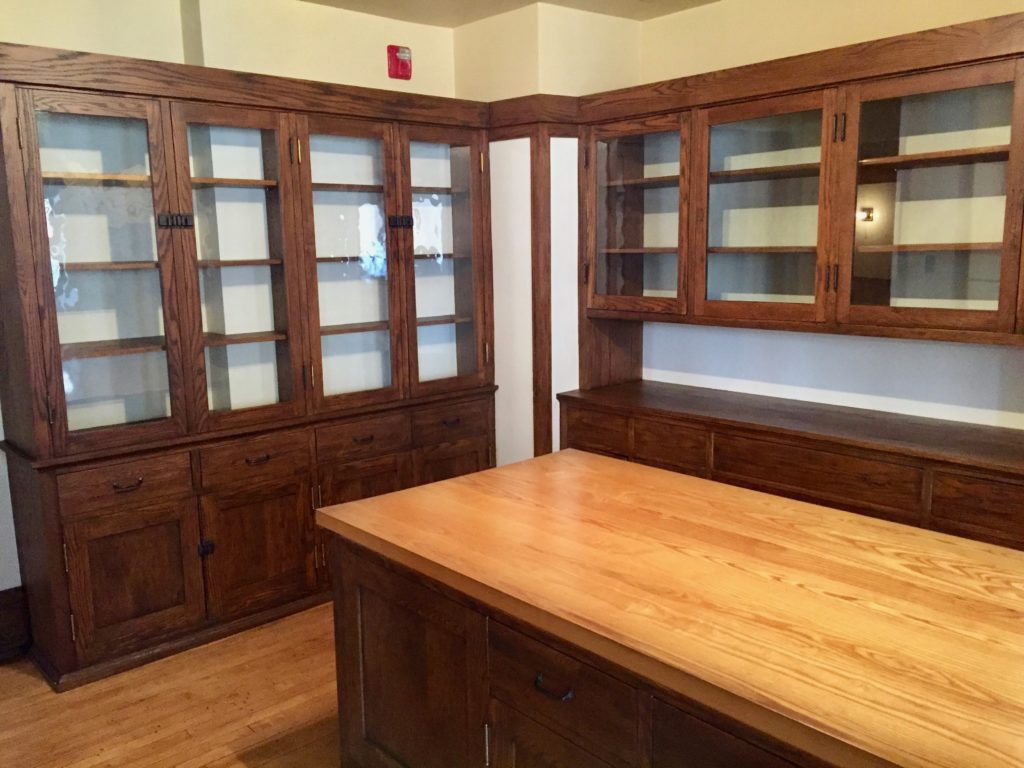
The family-friendly floor plan pushes service spaces – the kitchen, the boiler room, laundry room, servants quarters, and a three-car garage – to one side of the house. The kitchen, detailed with glass-front cabinets, is bigger than you’d find in most Wright homes. But that’s because the Robies had several servants. The master bedroom, on the third floor, was sited to command the best park views. A small closet and art glass door in this room leads to a balcony facing south and west. To conserve living space, Wright designed dresser drawers into bedroom walls under windows. In this room, and throughout the house, he hid radiators within wood cases.
Unfortunately, the Robies only lived in the house for a year and a half. Frederick was in business with his his father, who died in 1910, leaving him with a massive debt to repay. Robie was forced to sell the house for what he paid for it – about $50,000. Maybe he didn’t get enough, considering that in 1956, The Archectural Record selected the Robie House as “one of the seven most notable residences ever built in America.

